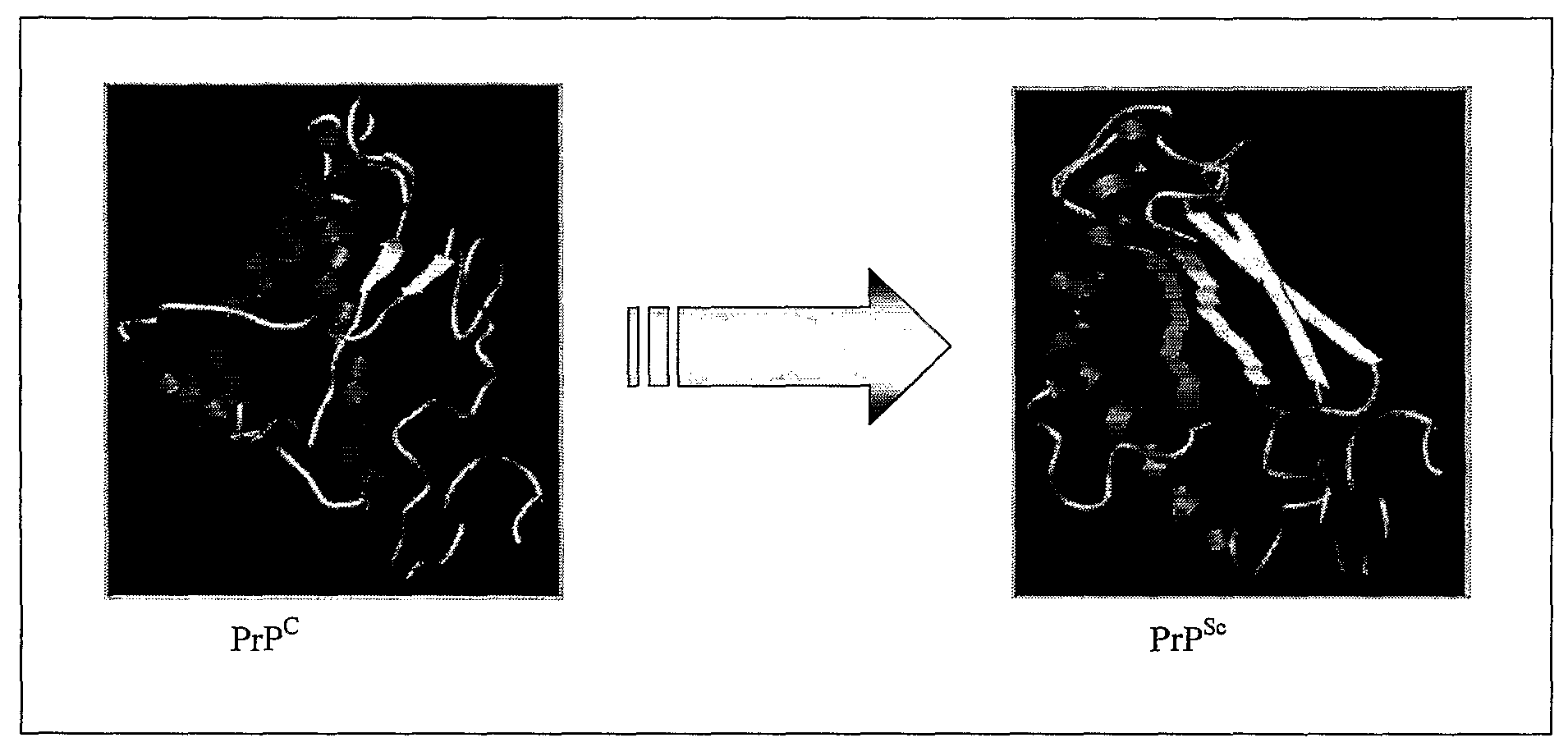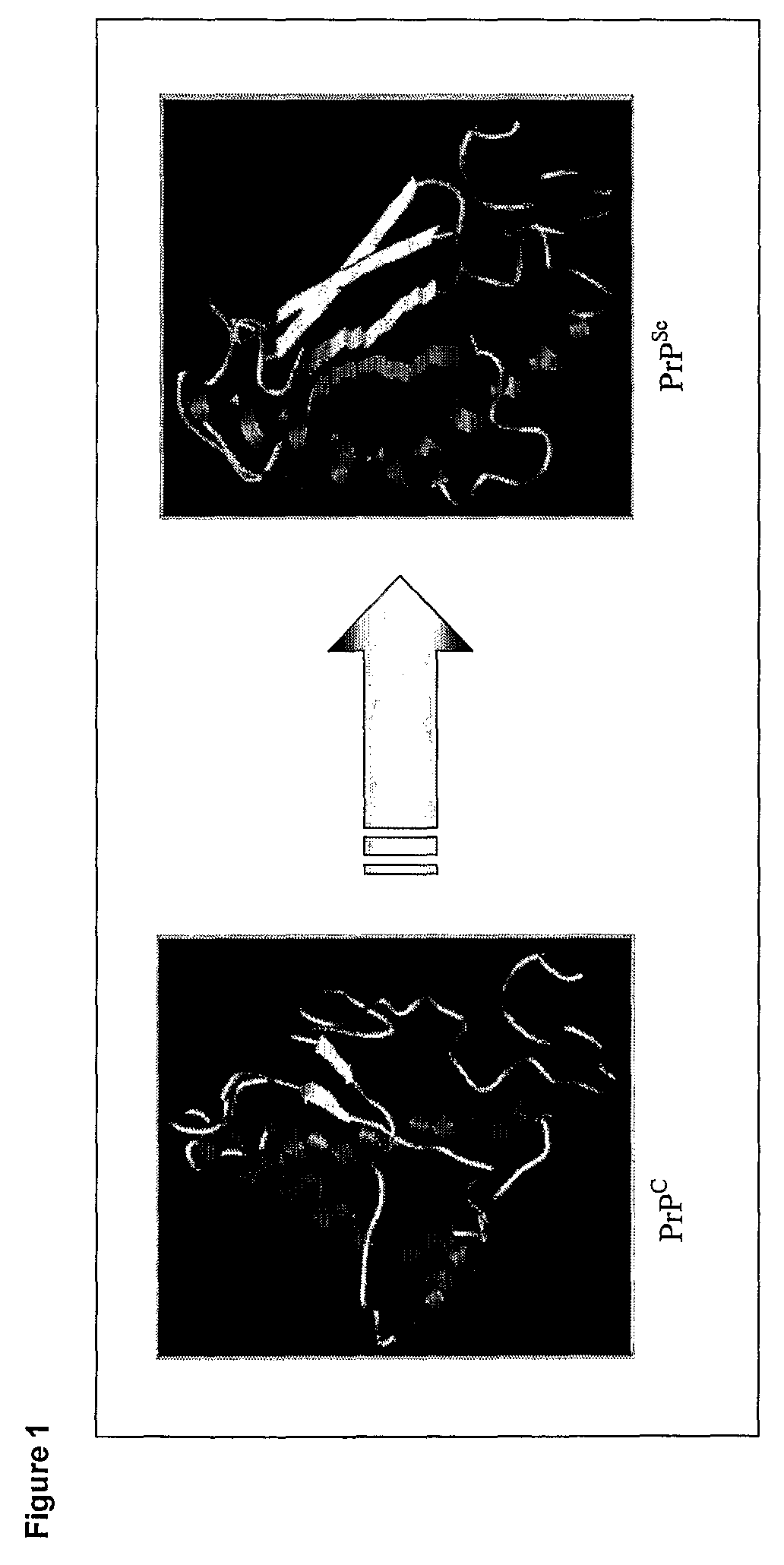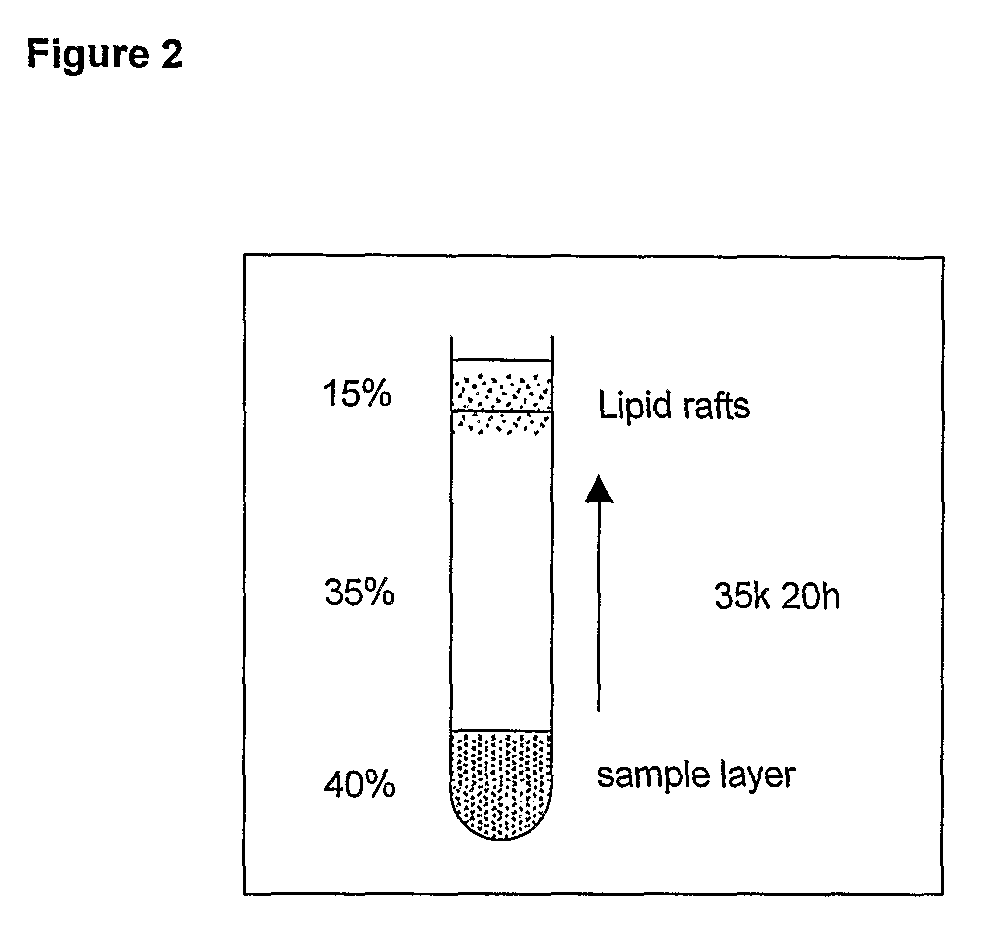Anti-Lipid Rafts Antibodies
a technology of anti-lipid rafts and antibodies, which is applied in the direction of peptides, drug compositions, and infusion cells, can solve the problems of ineffective reduction of the infectivity of tse pathogens, no therapy available, and no other plausible hypothesis, and achieve the effect of preventing the conversion of prpc into prps
- Summary
- Abstract
- Description
- Claims
- Application Information
AI Technical Summary
Benefits of technology
Problems solved by technology
Method used
Image
Examples
example 1
Introduction
[0360]Neuroblastoma cell line derived from mice (N2a) was used in the present invention because it is one of the few cell lines that can be infected with prion (Butler et al. 2001). Two N2a subclones either resistant or sensitive to infection (herein referred to as #23 and #60 respectively) were isolated. These subclones were selected because they displayed similar morphology, growth rates and levels of PrP expression. Furthermore isolation of PrP cDNA from both cell lines revealed identical coding sequences. All these data together suggest that the phenotypic differences between the sensitive and resistant subclones are not due to differences in the expression, localisation or primary sequence of PrPC but rather to the presence or absence of other factors within the lipid rafts involved in the process of conversion.
[0361]In order to identify these factors, a “monoclonal antibody approach” was used in which a battery of rat monoclonal antibodies (Mabs) were produced agai...
example 2
Introduction
[0393]Experiments were performed to characterise further the most interesting antibodies described in example 1. The original frozen hybridoma stocks were re-cultured on a larger scale and secreted antibodies were purified and concentrated from the culture supernatant (see Methods). Some clones grew poorly. Of the original 22 inhibitory clones (#s 5, 51, 57, 197, 235, 245, 305, 308, 320, 329, 615) grew well and were characterized further. The effect of the purified antibodies from these clones on PrP replication is described below. Antibodies from several clones which, from the experiments in example 1 were found to have no effect on PrP replication (#s 93, 122, 306), were included as negative controls.
Material and Methods
Purification and Concentration of Rat Monoclonal Antibodies
[0394]Hybridomas were grown in 10 cm culture dishes in ultra-low IgG medium. To purify antibodies, 2.7 ml of hybridoma supernatant, was mixed with 300 μl of Tris-HCl 1M, pH 7.5 and 0.527 g of Na...
PUM
| Property | Measurement | Unit |
|---|---|---|
| volume | aaaaa | aaaaa |
| pH | aaaaa | aaaaa |
| pH | aaaaa | aaaaa |
Abstract
Description
Claims
Application Information
 Login to View More
Login to View More - R&D
- Intellectual Property
- Life Sciences
- Materials
- Tech Scout
- Unparalleled Data Quality
- Higher Quality Content
- 60% Fewer Hallucinations
Browse by: Latest US Patents, China's latest patents, Technical Efficacy Thesaurus, Application Domain, Technology Topic, Popular Technical Reports.
© 2025 PatSnap. All rights reserved.Legal|Privacy policy|Modern Slavery Act Transparency Statement|Sitemap|About US| Contact US: help@patsnap.com



